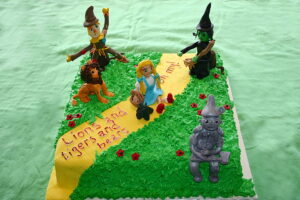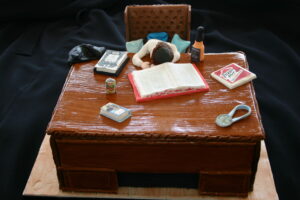This seemed like a pretty straightforward order. The cake was for a party following an army swearing-in ceremony. The soldier’s proud mother was visiting from overseas and was very excited to be part of the celebrations. Unlike some customers, she knew exactly what she wanted the cake to look like and I took great pains to make it to her specifications. Disaster struck from an unexpected quarter.
“But why would you make an army cake blue?” she asked perplexedly. I was equally perplexed. There was no blue food colour in this cake, just a combination of greens and a hint of black to make it somewhat khaki. I suggested that maybe the lighting in her house was casting a blue shade, but she insisted that this was not the case. I was stumped and dismayed. The conversation ended without a clear resolution.
I stewed over the incident for quite some time. What could I have done differently?
The Debate Rages On
Does this situation remind you of anything? Who among you doesn’t remember the controversy of the blue/black or white/gold dress from last May? Here’s a photo.

Within days of it being posted online, 28 million people had seen this photo and it sparked heated arguments. My favourite comment about it was, “if that’s not gold my entire life has been a lie” (the dress was actually blue and black – no gold and white version was sold). National Geographic (among hundreds of others) attempted to explain the differences of opinion to the bewildered masses. I’m doubtful the masses were convinced.
What is the takeaway for me? Well, I’m not sure, but I don’t think there is one. It does make me feel better about what happened, since apparently our perception of colour is entirely out of our control. On the other hand, does this mean that every time I labour to achieve just the right shade for a cake, I’m the only one actually seeing it that way?
(9722) 563-9668








